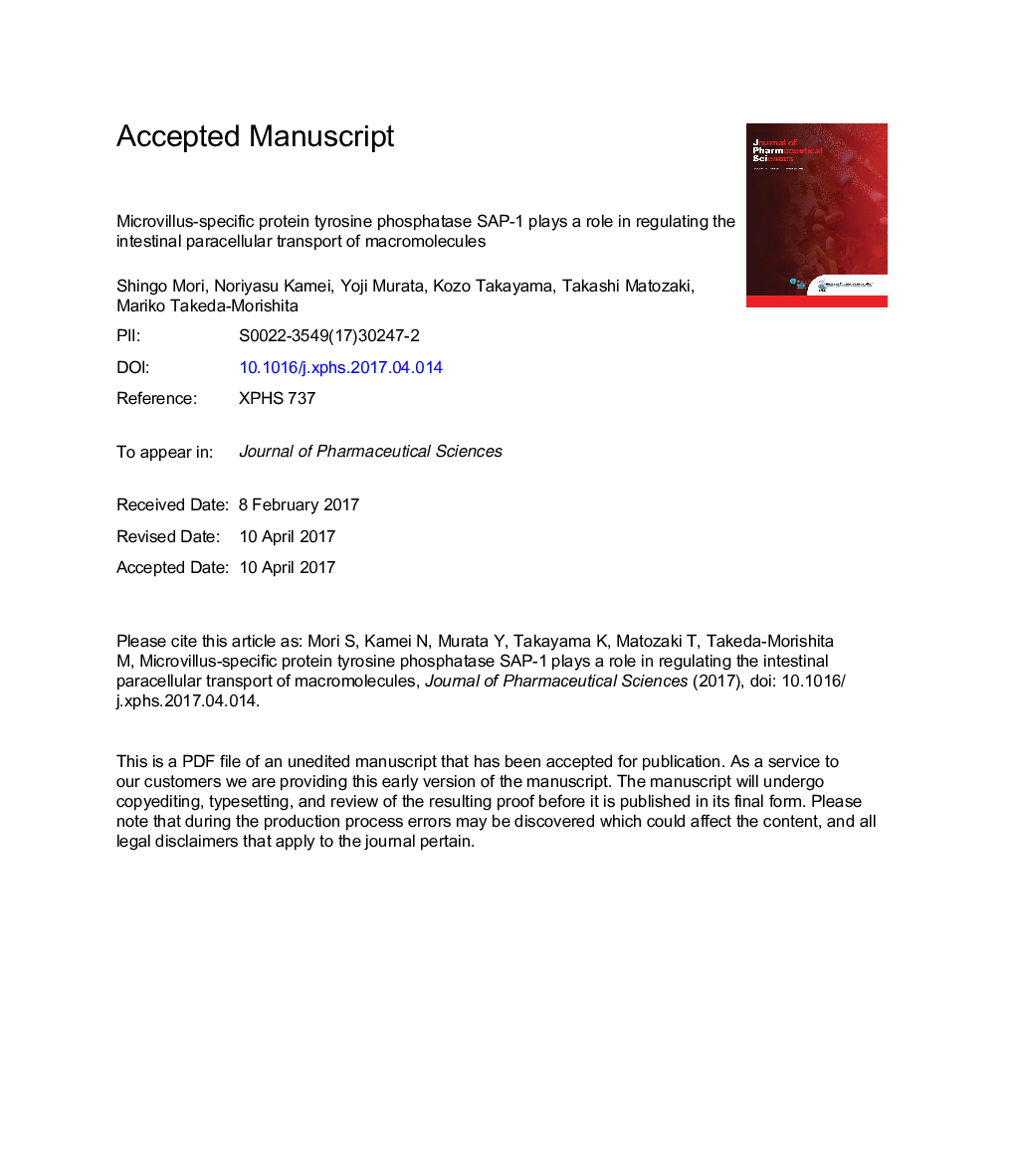| Article ID | Journal | Published Year | Pages | File Type |
|---|---|---|---|---|
| 8514155 | Journal of Pharmaceutical Sciences | 2017 | 16 Pages |
Abstract
The stomach cancer-associated protein tyrosine phosphatase 1 (SAP-1) is a receptor-type protein tyrosine phosphatase that is specifically expressed on the apical membrane of the intestinal epithelium. SAP-1 is known to maintain the balance of phosphorylation of proteins together with protein kinases; however, its biological function and impact on pharmacokinetics in the intestine remain unclear. The present study, therefore, aimed at clarifying the relationship between SAP-1 and the intestinal absorption behaviors of typical transporter substrates and macromolecules. The endogenous levels of glucose and total cholesterol in the blood were similar between wild-type and SAP-1-deficient mice (Sap1â/â), suggesting no contribution of SAP-1 to biogenic influx. Moreover, in vitro transport study with everted ileal sacs demonstrated that there was no difference in the absorption of breast cancer resistance protein, P-glycoprotein, and peptide transporter substrates between both mice. However, absorptive clearance of macromolecular model dextrans (FD-4 and FD-10) in Sap1â/â mice was significantly higher than that in wild-type mice, and this was confirmed by the trend of increased FD-4 absorption from colonic loops of Sap1â/â mice. Therefore, the results of this study suggest the partial contribution of SAP-1 to the regulated transport of hydrophilic macromolecules through paracellular tight junctions.
Keywords
Related Topics
Health Sciences
Pharmacology, Toxicology and Pharmaceutical Science
Drug Discovery
Authors
Shingo Mori, Noriyasu Kamei, Yoji Murata, Kozo Takayama, Takashi Matozaki, Mariko Takeda-Morishita,
